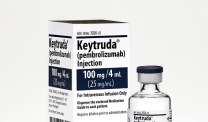CARD Clinic in Libby Designated as Center of Excellence
Treatment & DoctorsWritten by Michelle Whitmer | Edited By Amy Edel

Lawmakers in Montana have declared the Center for Asbestos Related Diseases, also known as the CARD Clinic, as a Center of Excellence. The Montana House of Representatives passed a resolution in May 2023 recognizing the clinic’s importance.
Lawmakers say the clinic based in Libby, Montana, played a significant role in an asbestos contamination Superfund that began receiving national attention in 1999. CARD Clinic opened its doors in 2000 and includes a staff of asbestos disease specialists such as researchers, nurses, doctors and respiratory therapists. It’s dedicated to the diagnosis and long-term care of Libby patients with asbestos-related diseases.
What Does New Designation Mean for CARD?
The new designation will allow CARD to obtain additional funding to meet the clinic’s current local obligations in Lincoln County Montana. The hope is that these added resources will also benefit people across the country.
Expanded funding for research should allow CARD to provide service for anyone in the U.S. exposed to Libby amphibole asbestos. Additionally, the Center of Excellence designation will also allow CARD to continue important research and work with other academic groups to enhance understanding of all types of asbestos and asbestos-related diseases. This will hopefully lead to more and improved treatments for people nationwide.
What CARD Offers
CARD provides asbestos screenings, resources and advocacy for people in Libby. The nonprofit clinic sees about 35 new patients every month. It also offers long-distance screening services for anyone who may not be able to travel to Libby.
The screenings include a full physical exam, chest X-ray, a CT scan, spirometry breathing test and complete blood work. A trained CARD medical provider reviews all test results for signs of asbestos-related diseases.
CARD has also created a comprehensive database of holistic health care services. The clinic continues to work with universities and government agencies on projects focused on better understanding asbestos-related diseases.
History of Asbestos Mining, Deaths in Libby
Libby became a vermiculite mining town in 1919. Because vermiculite, a heat-resistant mineral, forms within the earth alongside asbestos veins, it’s easy for asbestos to contaminate the vermiculite deposit. A report published in 2021 in the Journal of Exposure Science and Environmental Epidemiology shows nearly 700 Libby residents have died of an asbestos-related disease such as mesothelioma, asbestosis or asbestos-related lung cancer.
W.R. Grace & Company took over mining operations in 1963. After decades of mining, Libby mine workers and residents, including those of nearby Troy, were exposed to toxic asbestos dust. Mining in Libby continued until 1990. In total, around 2,400 people in the area have been diagnosed with an asbestos-related disease in addition to the hundreds of residents who have died because of these conditions.
W.R. Grace filed for bankruptcy in 2001 after facing many lawsuits. The company established a trust fund in 2014 with $3 billion to compensate victims. W.R. Grace in January 2023 offered $18.5 million to settle the last of Montana’s claims for environmental damages from the company’s mining operations.
Ongoing Cleanup Efforts at Libby
The ongoing work in Libby is said to be the largest and longest-running asbestos cleanup project in American history. The town was put on the U.S. Environmental Protection Agency’s Superfund list in 2002, which means the project is on the National Priorities List for the agency to clean up as a hazardous waste site.
In September 2021, the agency announced that a major milestone was reached in the cleanup effort. A large section that includes all roadways and major highways in and between the towns of Libby and Troy had been restored. Today, the agency considers Libby safe. The agency says the amount of asbestos in downtown Libby is almost 100,000 times lower than when the mine was in operation.






